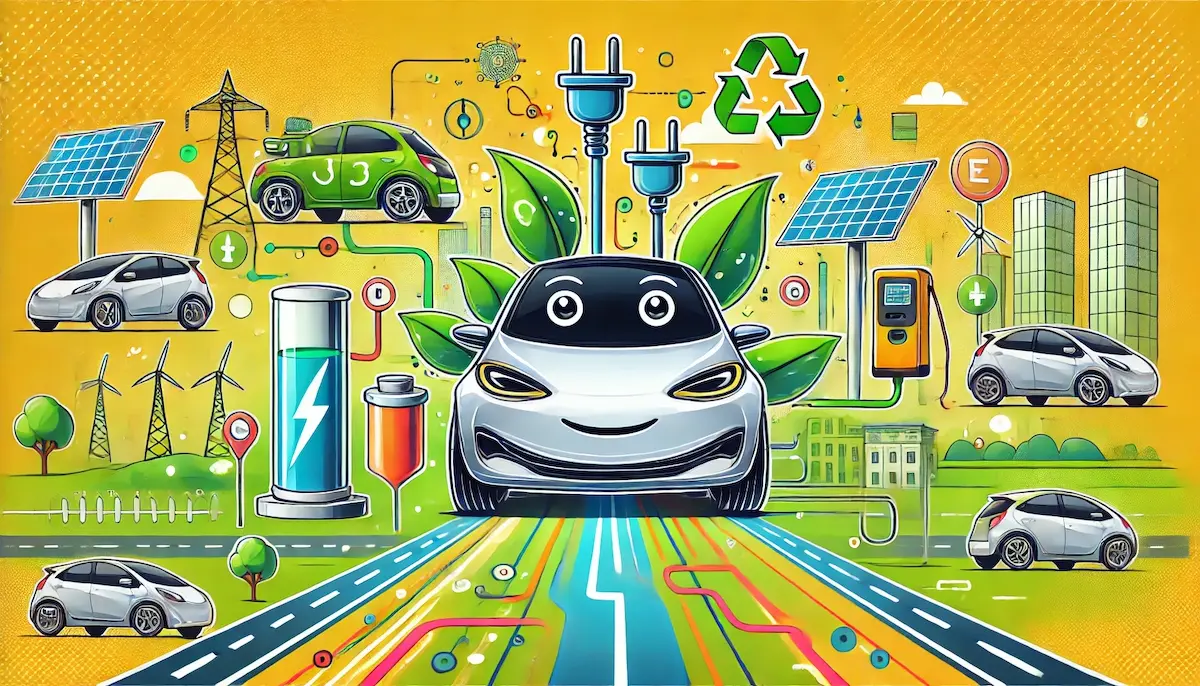Electric vehicles (EVs) are rapidly transforming the automotive industry, offering a cleaner, more sustainable alternative to traditional gasoline-powered cars. With advancements in technology and growing environmental awareness, EVs are becoming increasingly popular among consumers and automakers alike. Let’s explore what electric vehicles are, how they work, and their impact on the future of transportation.
What are Electric Vehicles?
Electric vehicles are automobiles that are powered entirely or partially by electric energy, stored in batteries, rather than by traditional internal combustion engines that burn fossil fuels. EVs can be broadly categorized into three types: battery electric vehicles (BEVs), plug-in hybrid electric vehicles (PHEVs), and hybrid electric vehicles (HEVs).
Battery Electric Vehicles (BEVs)
BEVs are fully electric vehicles that rely solely on batteries for power. They do not have a gasoline engine or fuel tank. Instead, they use electric motors and need to be recharged by plugging into an electric power source. Examples of BEVs include the Tesla Model 3, Nissan Leaf, and Chevrolet Bolt.
Plug-in Hybrid Electric Vehicles (PHEVs)
PHEVs combine a gasoline engine with an electric motor and battery. They can run on electric power alone for shorter distances and switch to the gasoline engine for longer trips. PHEVs can be recharged by plugging into an electric outlet and refueling at gas stations. Examples include the Toyota Prius Prime and the Chevrolet Volt.
Hybrid Electric Vehicles (HEVs)
HEVs use a combination of a gasoline engine and an electric motor, but unlike PHEVs, they cannot be plugged in to recharge. Instead, the battery is charged through regenerative braking and the internal combustion engine. HEVs are more fuel-efficient than conventional vehicles but still rely on gasoline. The Toyota Prius is a well-known example of an HEV.
How Do Electric Vehicles Work?
Electric Motor
EVs use an electric motor that converts electrical energy from the battery into mechanical energy, which drives the wheels. This process is highly efficient, with electric motors capable of providing instant torque for quick acceleration.
Battery Pack
The battery pack is the heart of an electric vehicle, storing the energy needed to power the electric motor. Most EVs use lithium-ion batteries due to their high energy density and long lifespan. The capacity of the battery, measured in kilowatt-hours (kWh), determines the vehicle’s range – how far it can travel on a single charge.
Charging
EVs can be charged using various methods:
- Level 1 Charging: Uses a standard household outlet (120V) and is the slowest charging method, typically adding about 2-5 miles of range per hour.
- Level 2 Charging: Requires a special charging unit (240V) and can add about 10-60 miles of range per hour, making it suitable for home and public charging stations.
- DC Fast Charging: Uses high-power charging stations (480V or higher) and can add 60-80 miles of range in just 20 minutes. This is ideal for long-distance travel and quick recharges.
Regenerative Braking
Regenerative braking is a key feature of EVs that captures energy normally lost during braking and converts it into electrical energy to recharge the battery. This enhances the vehicle’s efficiency and extends its range.
Benefits of Electric Vehicles
Environmental Impact
One of the most significant advantages of EVs is their positive impact on the environment. By producing zero tailpipe emissions, BEVs help reduce air pollution and greenhouse gas emissions, contributing to cleaner air and combating climate change.
Cost Savings
EVs typically have lower operating costs than gasoline-powered vehicles. Electricity is generally cheaper than gasoline, and EVs require less maintenance since they have fewer moving parts and no need for oil changes. Additionally, many governments offer incentives and tax credits to encourage EV adoption.
Performance
Electric vehicles offer superior performance with instant torque, providing quick acceleration and a smooth driving experience. The low center of gravity due to the battery placement enhances stability and handling.
Energy Independence
By using electricity as a fuel source, EVs can reduce dependence on imported oil and contribute to energy independence. This is particularly important for countries looking to diversify their energy sources and enhance energy security.
Challenges and Future Outlook
Charging Infrastructure
The availability of charging infrastructure remains a challenge for widespread EV adoption. Expanding the network of public charging stations, particularly fast chargers, is crucial to address range anxiety and make EVs a practical choice for more people.
Battery Technology
While battery technology has improved significantly, further advancements are needed to increase energy density, reduce costs, and enhance charging speed. Research into new battery materials and technologies, such as solid-state batteries, is ongoing and holds promise for the future.
Range and Cost
Although the range of EVs has increased, it is still a concern for some consumers, particularly for long-distance travel. Additionally, the upfront cost of EVs can be higher than traditional vehicles, though this is offset by lower operating costs and incentives.
Recycling and Sustainability
The production and disposal of batteries pose environmental challenges. Developing efficient recycling processes and sustainable sourcing of raw materials, such as lithium and cobalt, is essential to minimize the environmental impact of EVs.
Conclusion
The future of transportation is electric, with EVs poised to play a central role in creating a more sustainable, efficient, and cleaner world. As technology continues to advance and infrastructure improves, electric vehicles will become increasingly accessible and practical for consumers worldwide. Embracing this shift towards electric mobility is crucial for achieving a sustainable future.
Blockfine thanks you for reading and hopes you found this article helpful.
